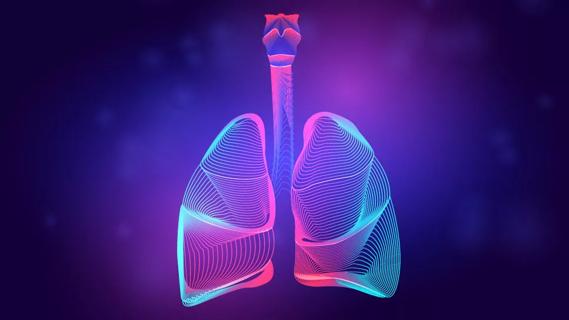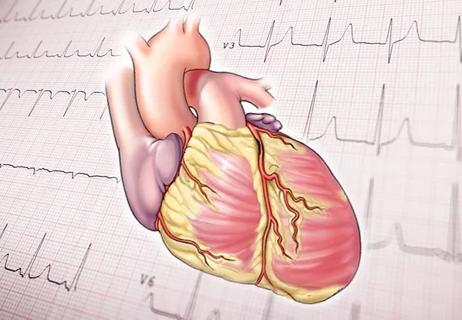Experts are challenging the one-size-fits-all paradigm

For decades, the Fontan operation has stood as one of the great surgical triumphs in congenital cardiology, transforming what was once a universally fatal condition into a chronic but survivable circulation. Yet as more patients live into adolescence and adulthood, a sobering reality has emerged: heart failure remains the dominant cause of late morbidity and mortality in those with Fontan physiology.
Advertisement
Cleveland Clinic is a non-profit academic medical center. Advertising on our site helps support our mission. We do not endorse non-Cleveland Clinic products or services. Policy
Despite this, clinicians continue to treat Fontan-associated heart failure largely through the lens of therapies developed for biventricular hearts. But can standard heart failure medications such as beta blockers, angiotensin-converting enzyme (ACE) inhibitors, and newer agents like SGLT2 inhibitors truly be expected to work in a circulation that lacks a sub-pulmonary ventricle?
This is the question that Shahnawaz Amdani, MD, Section Head of Pediatric Heart Function and Transplant at Cleveland Clinic Children’s, and his colleagues set out to examine in a recent paper published in the Journal of Cardiac Failure. Their systematic review represents one of the most comprehensive efforts yet to synthesize the fragmented evidence surrounding heart failure pharmacotherapy in the Fontan population.
“The Fontan circulation is completely unique,” Dr. Amdani explains. “It depends on passive venous return, not on a pump. And yet, our approach to managing heart failure has been borrowed almost entirely from the adult literature.”
His team conducted a PRISMA-guided review across Medline, Embase, and Cochrane databases through early 2025, focusing on studies with at least five Fontan patients treated with standard or novel heart failure medications. Only nine studies met criteria, a stark illustration of how little is known.
The findings were sobering. Beta blockers and ACE inhibitors, the bedrock of conventional heart failure care, often showed minimal or inconsistent benefit, and in some cases, potential harm. “That’s not surprising,” says Dr. Amdani. “When you take a medication designed to modulate afterload and heart rate in a system that’s already preload-sensitive and has no sub-pulmonary ventricle, you might not get the effect you expect.”
Advertisement
In contrast, newer classes such as SGLT2 inhibitors emerged as promising, albeit from limited data. Early reports suggest these agents may improve oxygenation, enhance diuresis, and reduce natriuretic peptides. Vasodilator therapies, too, showed favorable hemodynamic responses, though whether these translate into meaningful long-term outcomes remains uncertain.
For Dr. Amdani, the takeaway is less about identifying the “right” drug and more about challenging the one-size-fits-all paradigm that dominates Fontan management.
“In our clinic, we see tremendous variability,” he notes. “A patient with a systemic left ventricle and reduced ejection fraction might respond to beta blockade, while someone with preserved function or a systemic right ventricle might not. We need to start treating Fontan failure as a collection of phenotypes, not a single disease.”
This perspective echoes across his work as Co-Director of the Frontier Fontan Clinic, Co-Chair of the Fontan Outcomes Network (FON) Research Work Group, and academic lead for the Fontan group within ACTION (Advanced Cardiac Therapies Improving Outcomes Network). These collaborative networks, he emphasizes, hold the key to progress.
What is urgently needed, he says, are large, multicenter, prospective studies that are adequately powered and stratified by phenotype. “We can’t continue to rely on small, retrospective case series,” says Dr. Amdani. “To truly advance care, we need trials that are designed for the Fontan circulation, not retrofitted from adult heart failure models.”
Advertisement
Endpoints, too, must evolve beyond biomarkers or acute hemodynamic change. “We should be measuring outcomes that matter to patients, such as transplant-free survival, functional capacity, and quality of life. That’s how we’ll know if we’re making a difference.”
For now, Dr. Amdani emphasizes the importance of individualized care and shared decision-making. “Until we have stronger evidence, management has to be tailored, patient by patient, phenotype by phenotype,” he says.
His hope is that this review serves as both a wake-up call and a roadmap. “We’ve reached the limits of extrapolation,” he reflects. “It’s time to study this circulation on its own terms and build a pharmacologic science that actually reflects the physiology we’re treating.”
The Fontan journey, he reminds us of, is one of human ingenuity, and now demands the same from science. “These patients represent the next frontier in heart failure,” says Dr. Amdani. “The question isn’t just which drug works, it’s whether we’re finally ready to rethink what heart failure means in the Fontan circulation.”
Advertisement
Advertisement

Decongestion, therapy titration and readmission rates comparable to those with traditional hospital care

Panel proposes staging and treatment protocols that support harmonized evaluation and management of heart failure in patients with congenital heart disease

Eminent clinician-researcher brings special expertise in nutritional interventions for heart failure

Recent volume and outcomes data in two major realms of cardiovascular care

Volatile organic compounds have potential in heart failure diagnostics

Basic understanding of condition and treatment is lacking

Indications and issues concerning cardiac resynchronization therapy, conduction system pacing

First-in-world implantation performed at Cleveland Clinic